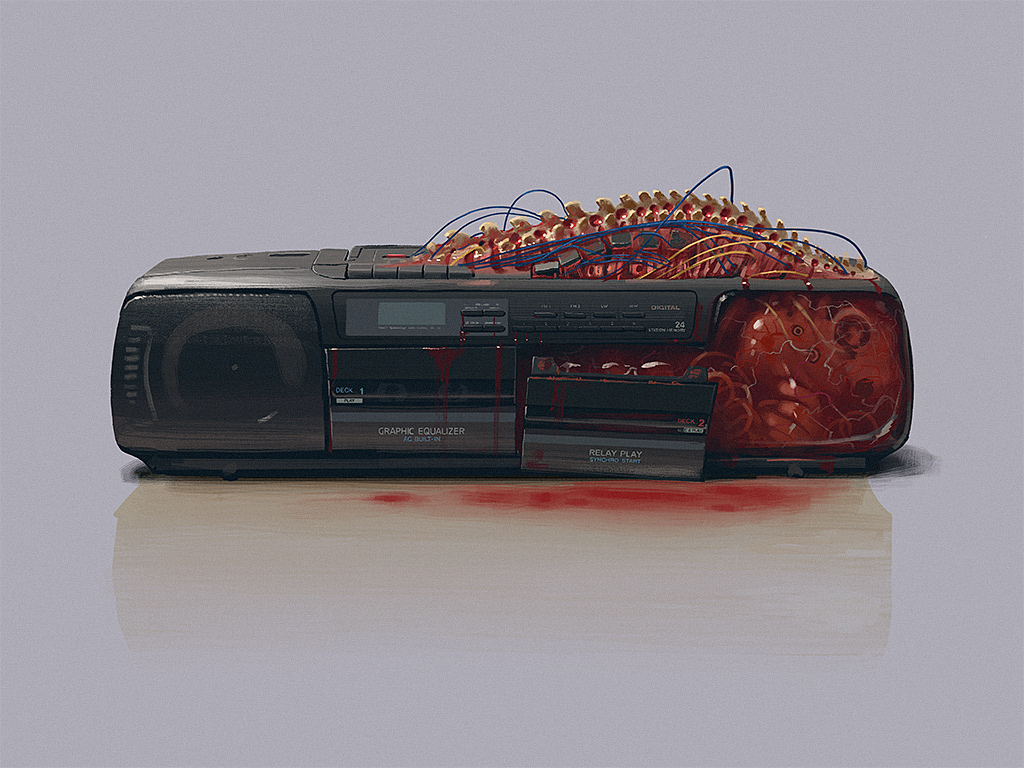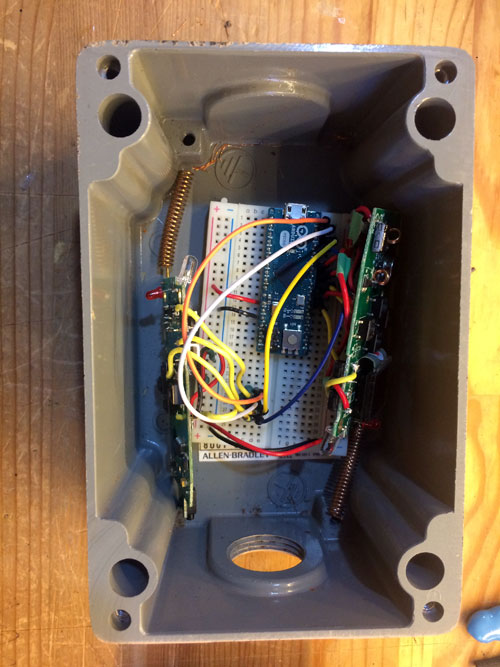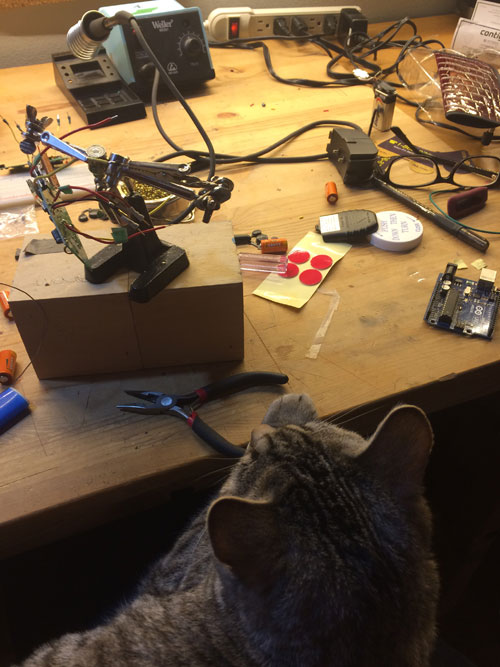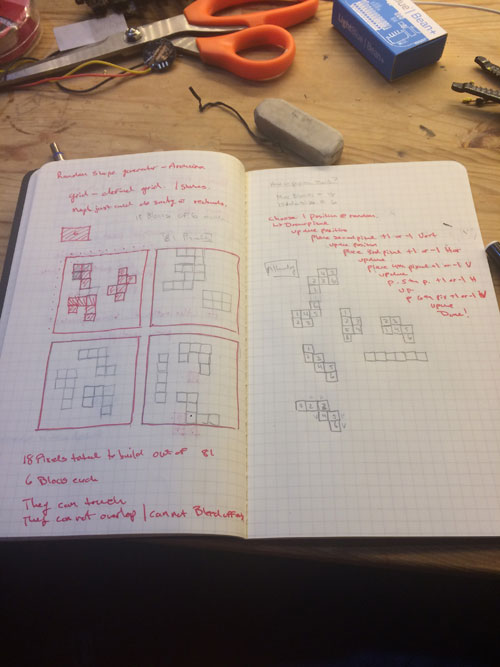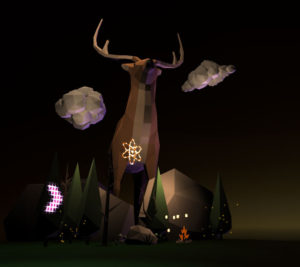From a game design standpoint, A Shock In The Dark is still evolving. It went through a couple of distinct phases. When it started, it was a game jam game, based around the housing market and Twister. There is a bit of tension between the physical aspect of being shocked and the explorations of design. Its not enough to just to shock people with a thing, there needs to be some aspect of fun, or problem solving along with it.
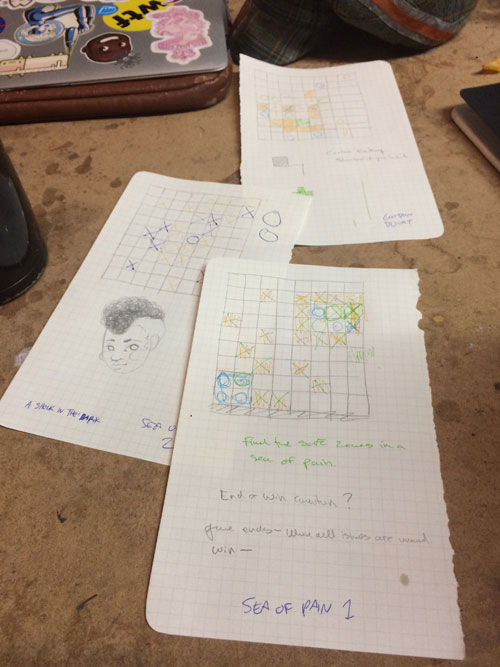
Sagan and I have spent time exploring that tension. And there’s been a lot of group back and forth about the role of the board, vs maybe having a DM, or the interplay between people between the rules. There is a general feeling that it would be nice to have something where its not just based around the shock.
So after the twister end of it. We started doing some prototyping with just grids, and paper, and thinking about what rule sets are fun. First it started with kind of an “Avoid the shock” idea, and we started playing some basic grids. We toyed with the idea of having different kinds of pieces and making it more strategy based, rather than just “avoid the shock area”.
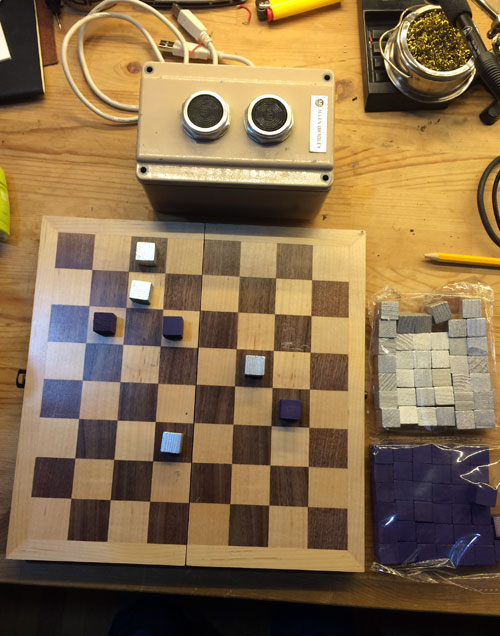
But we nixed the scout / multiple piece strategy just because it started to feel too complicated. The one common thread, has been the idea of finding, or uncovering shapes. Eventually we settled on something akin to reverse battleship. So you are awash in a sea of possible shocks, with some safe spots. This proved to be decently nerve wracking, but also fun in paper form.
We expanded a bit to try some different rule sets. So for example
- Having an invisible safe or shock area that grew and changed as each turn passed.
- having different islands, and trying to “steal” people’s islands.
- Interconnecting safe areas
- Getting people to draw and develop their own player boards
- Thinking about clues, or cues, or house rules on trading.
Eventually we started thinking about clues and cards. We compiled everything into a document.
We think that for now, without the actual board, we will have some placement tokens, a third person, and a shock box, and some etched cards. The rule set isn’t too complicated, but has some twists in it. we think it’ll work out pretty well.
